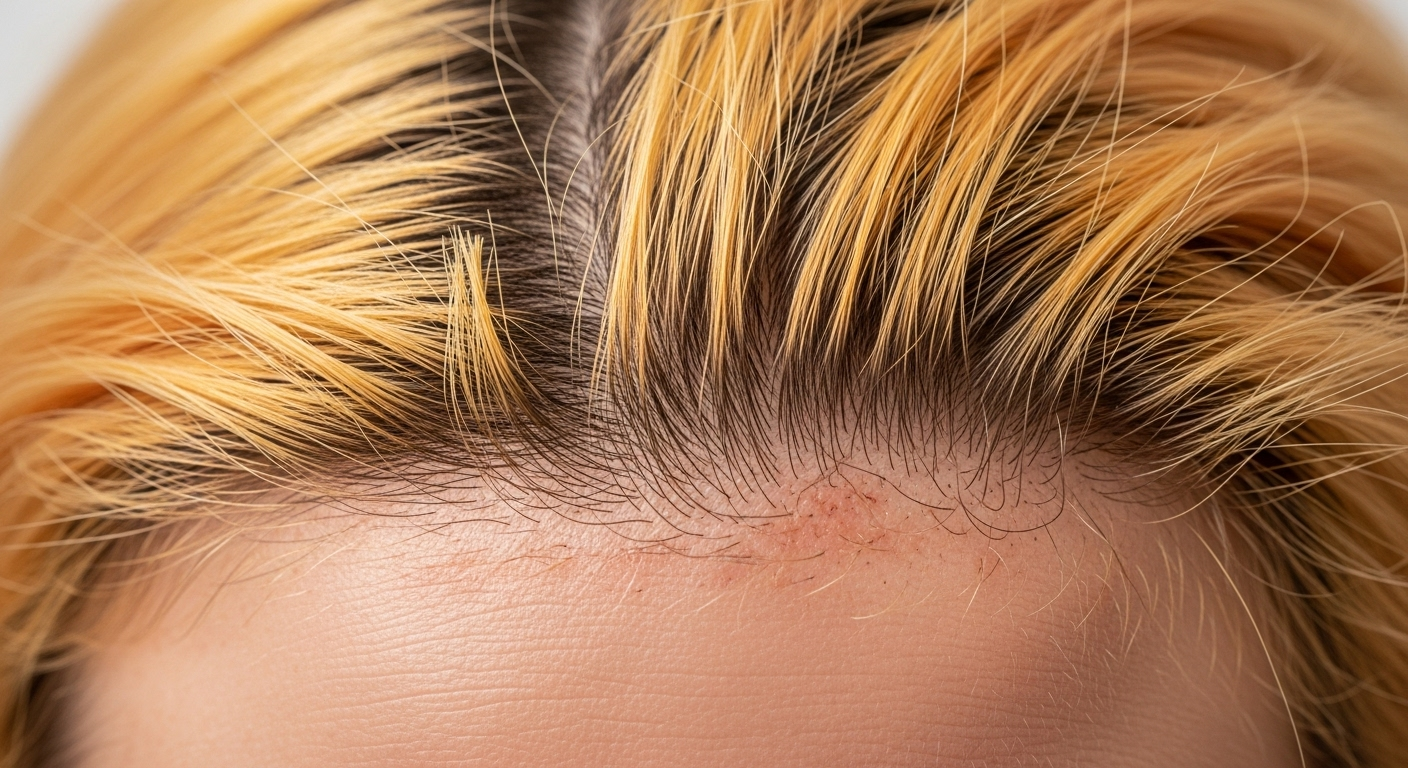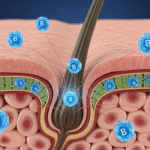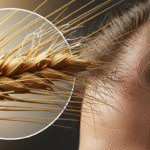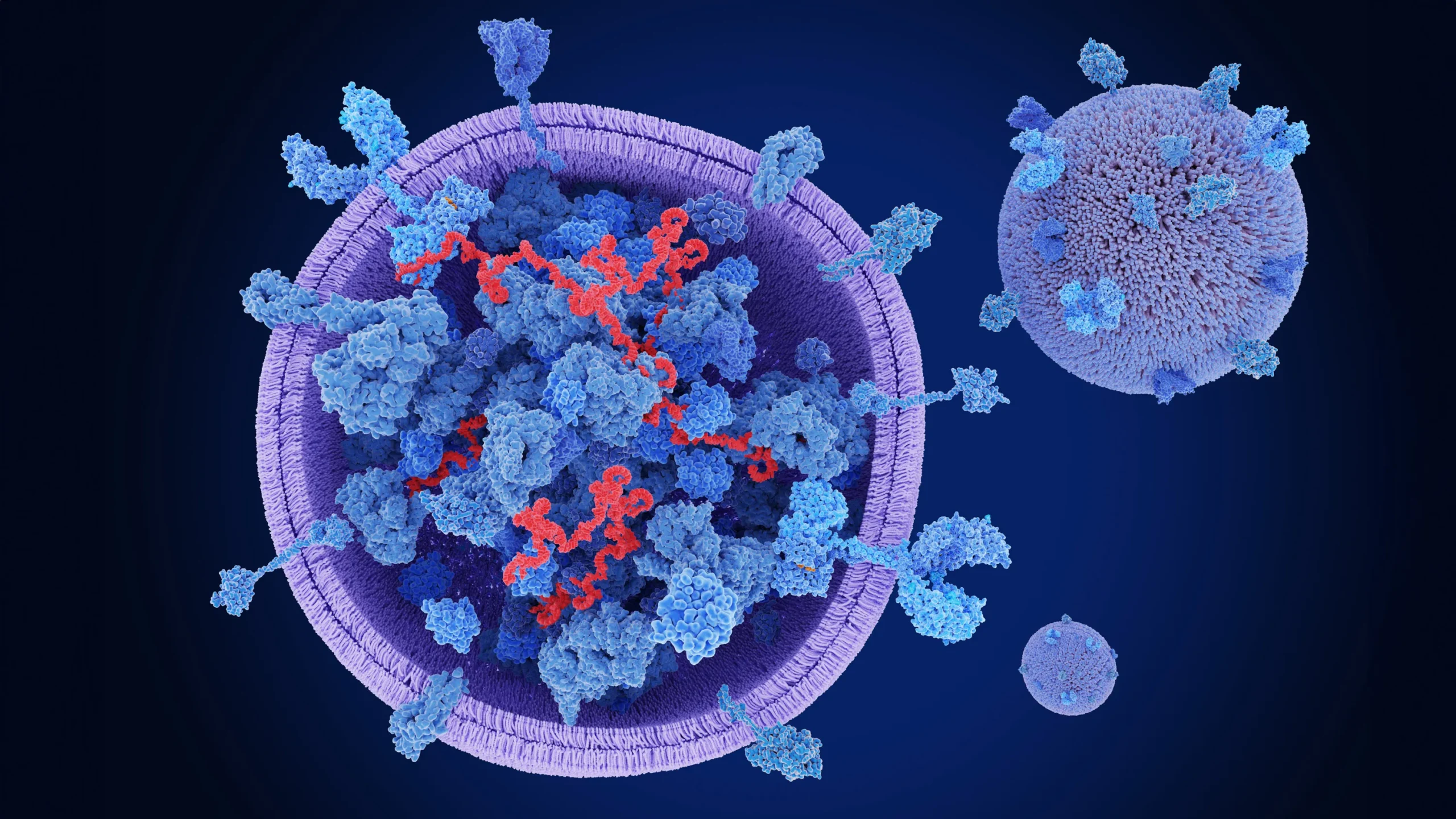If you’ve noticed increased hair shedding, breakage, or thinning after bleaching your hair, you might be asking yourself: Can bleach cause hair loss? The short answer is yes—but the damage is often preventable with the right care. In this guide, you’ll learn how bleach affects your hair, the signs of bleach-related damage, and proven ways …
If you’ve noticed increased hair shedding, breakage, or thinning after bleaching your hair, you might be asking yourself: Can bleach cause hair loss? The short answer is yes—but the damage is often preventable with the right care.
In this guide, you’ll learn how bleach affects your hair, the signs of bleach-related damage, and proven ways to protect and restore your strands. Backed by expert advice, we’ll walk you through everything you need to know to maintain both your style and your scalp health.
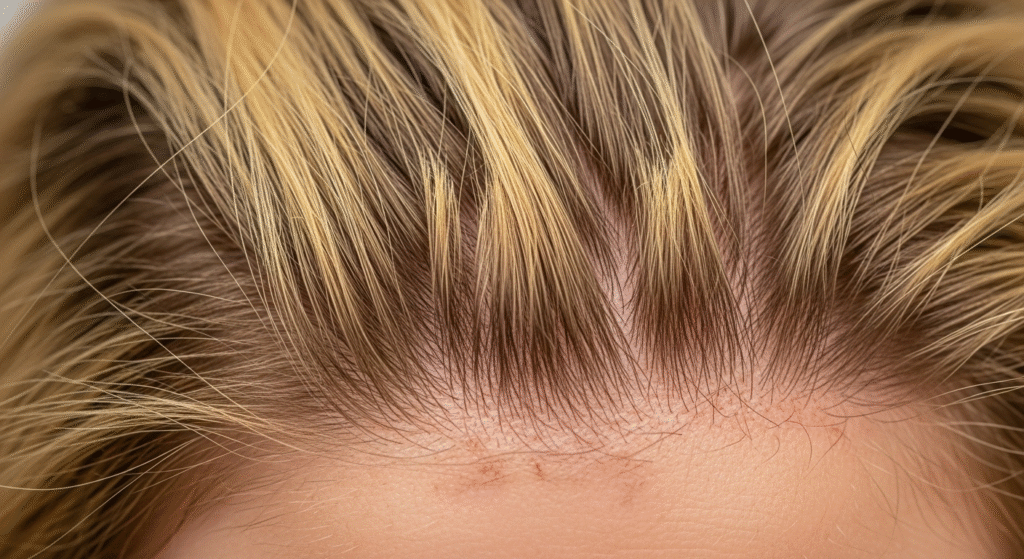
How Hair Bleach Works
Bleach is a chemical lightener that strips pigment (melanin) from hair. It typically contains hydrogen peroxide and ammonia or related compounds. These chemicals:
- Break down the hair’s natural pigment.
- Open the cuticle layer for color removal.
- Oxidize melanin to lighten the shade.
The problem: This process also weakens the protein structure (keratin) of hair, making it more vulnerable to breakage and shedding.
Can Bleach Cause Hair Loss?
Yes — but usually indirectly. Bleach doesn’t kill hair follicles permanently; instead, it weakens the hair shaft, causing breakage that can mimic true hair loss.
Mechanisms of Damage
- Protein degradation: Keratin damage makes strands brittle.
- Cuticle lifting: Rough, lifted cuticles lead to tangling and breakage.
- Moisture loss: Dry hair is more prone to snapping.
- Scalp irritation: Chemical burns or inflammation can temporarily disrupt hair growth.
Signs of Bleach-Related Hair Loss
Bleach damage can appear within hours or weeks after treatment. Look out for:
- Excess hair in your brush or shower drain
- Hair snapping mid-shaft
- Straw-like texture
- White “bubble” ends (bubble hair)
- Thinning ponytail diameter
- Scalp redness or tenderness
Risk Factors That Increase Hair Loss After Bleaching
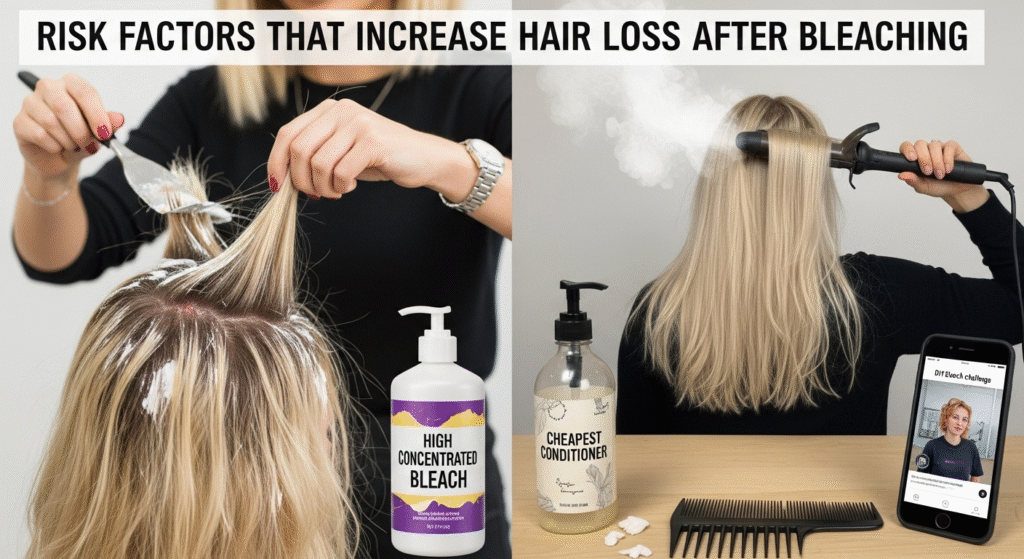
Frequency of Bleaching
Bleaching too often (more than once every 6–8 weeks) compounds damage.
Strength of Developer
High-volume peroxide (30–40 vol) is harsher and more damaging.
Pre-existing Hair Damage
Chemically treated, heat-damaged, or already weak hair is more vulnerable.
Improper Application
Overlapping bleach on previously lightened hair or leaving it on too long increases risk.
Recovery & Prevention Tips
Before You Bleach
- Get a strand test.
- Use a lower-volume developer.
- Space out bleaching sessions.
Aftercare Routine
- Deep conditioning masks twice a week.
- Protein treatments for structural repair.
- Avoid heat styling for 1–2 weeks post-bleach.
Scalp Care
- Use gentle, sulfate-free shampoos.
- Massage with nourishing oils to improve circulation.
- Avoid scratching or over-washing.
When to See a Professional
If you notice:
- Persistent shedding beyond 2–3 weeks
- Severe scalp burns
- Patchy hair loss
Consult a dermatologist or trichologist immediately. Early intervention can prevent long-term damage.
Expert Pro Tips
Alternate between protein and moisture treatments.
Always bleach on healthy, unbroken hair.
Use bond repair products during and after bleaching.
Trim regularly to prevent split ends from traveling up the shaft.
Myths About Bleach and Hair Loss
Many people believe that bleach automatically causes permanent baldness, but this is rarely the case. True hair loss occurs when hair follicles are destroyed — something bleach typically does not do unless severe chemical burns damage the scalp tissue itself.
In most cases, the hair shaft breaks above the follicle, giving the illusion of thinning.
Another myth is that “natural hair” is immune to bleach damage. Even virgin hair can suffer from protein breakdown, dryness, and breakage if bleach is overused or applied incorrectly. The key is understanding that bleach is a controlled damage process — the lighter you go, the more structural compromise occurs.
Professional vs. At-Home Bleaching
One major factor in bleach-related hair loss is who applies the bleach. Professional colorists are trained to monitor timing, use protective products, and avoid overlapping onto previously lightened sections.
At-home bleaching kits, on the other hand, often contain stronger formulations and leave more room for error — from uneven application to excessive processing time.
If you’re determined to bleach at home, educate yourself thoroughly, perform strand and patch tests, and follow product instructions precisely.
However, for dramatic color changes, a salon visit is safer and often more cost-effective in the long run, as it reduces the risk of severe damage and costly repairs later.
FAQs
Does bleach permanently damage hair follicles?
Not typically. Most bleach damage affects the shaft, not the follicle, so regrowth is possible.
How long does it take for hair to recover after bleach damage?
Mild damage may improve in weeks, while severe cases may require several months and trims.
Can Olaplex or bond builders prevent hair loss from bleach?
They can help reinforce hair bonds but won’t prevent all damage if bleaching is too frequent or aggressive.
Conclusion
While bleach can cause hair loss, it’s usually preventable with correct technique, moderation, and a strong aftercare routine. Damaged hair often recovers with time and proper care — so don’t panic, but do take action.
Ready to take your next step
Ready to restore your hair’s health after bleach damage? Book a consultation with Dr. Uzma Irfan, an ISHRS-certified surgeon in Islamabad today for expert assessment and a customized recovery plan.

